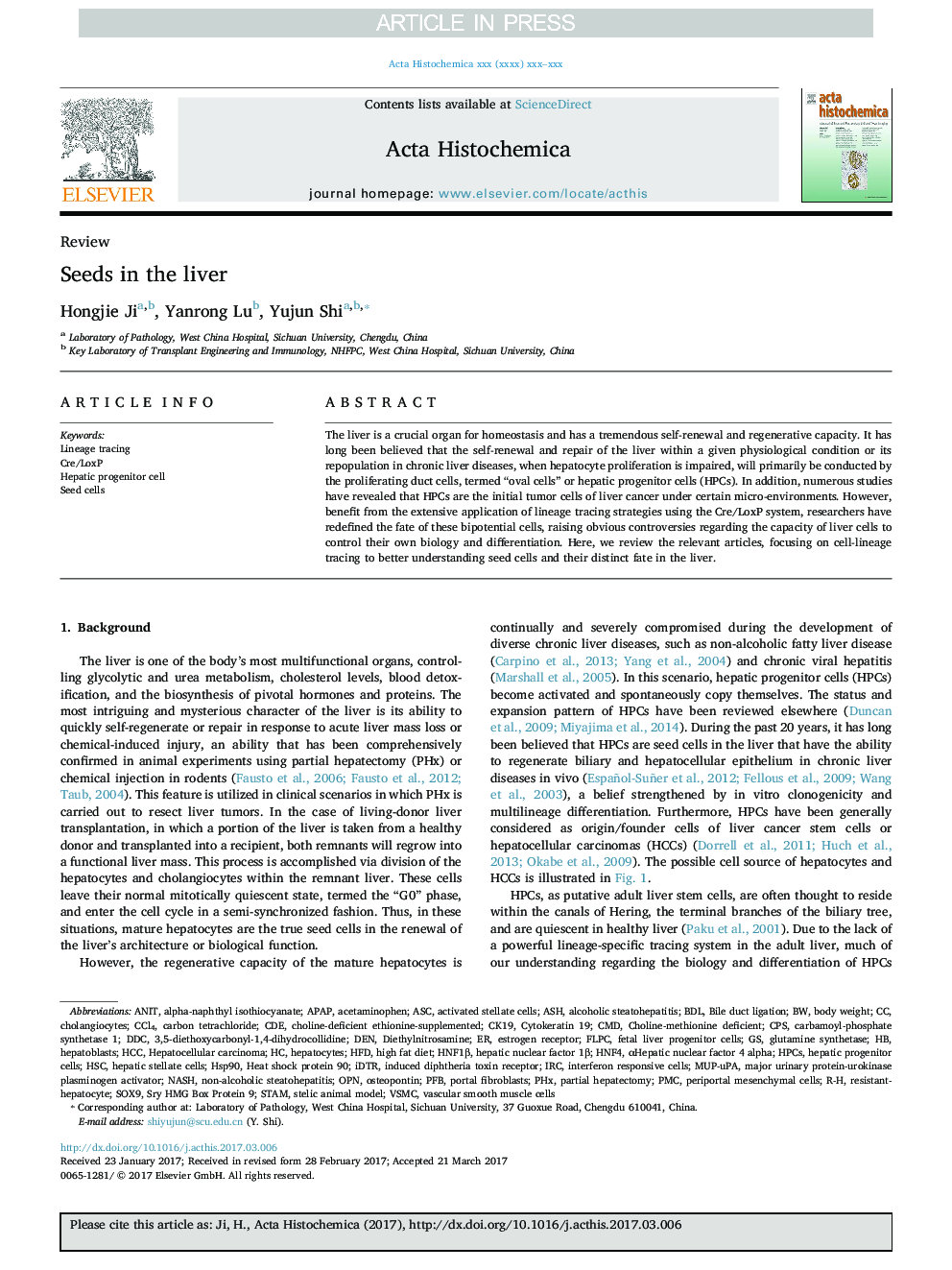| Article ID | Journal | Published Year | Pages | File Type |
|---|---|---|---|---|
| 5504140 | Acta Histochemica | 2017 | 8 Pages |
Abstract
The liver is a crucial organ for homeostasis and has a tremendous self-renewal and regenerative capacity. It has long been believed that the self-renewal and repair of the liver within a given physiological condition or its repopulation in chronic liver diseases, when hepatocyte proliferation is impaired, will primarily be conducted by the proliferating duct cells, termed “oval cells” or hepatic progenitor cells (HPCs). In addition, numerous studies have revealed that HPCs are the initial tumor cells of liver cancer under certain micro-environments. However, benefit from the extensive application of lineage tracing strategies using the Cre/LoxP system, researchers have redefined the fate of these bipotential cells, raising obvious controversies regarding the capacity of liver cells to control their own biology and differentiation. Here, we review the relevant articles, focusing on cell-lineage tracing to better understanding seed cells and their distinct fate in the liver.
Keywords
CholangiocytesHNF4APAPPFBDenBDLVSMCHepatoblastsCCl4HFDCDEPMCOPNHSP90CK19HNF1βANITHSCSox9CMDcpsIRCASCcholine-deficient ethionine-supplemented3,5-diethoxycarbonyl-1,4-dihydrocollidineCre/loxPddCHCCHepatocytesHPCsPHxNon-alcoholic steatohepatitisOsteopontinalcoholic steatohepatitisAcetaminophenAshdiethylnitrosamineLineage tracingHigh fat dietVascular smooth muscle cellshepatic progenitor cellshepatic progenitor cellHepatic stellate cellscytokeratin 19stamNash Partial hepatectomybody weightHeat shock protein 90bile duct ligationHepatocellular carcinomaCarbon tetrachlorideGlutamine synthetaseEstrogen receptor
Related Topics
Life Sciences
Biochemistry, Genetics and Molecular Biology
Biochemistry
Authors
Hongjie Ji, Yanrong Lu, Yujun Shi,
